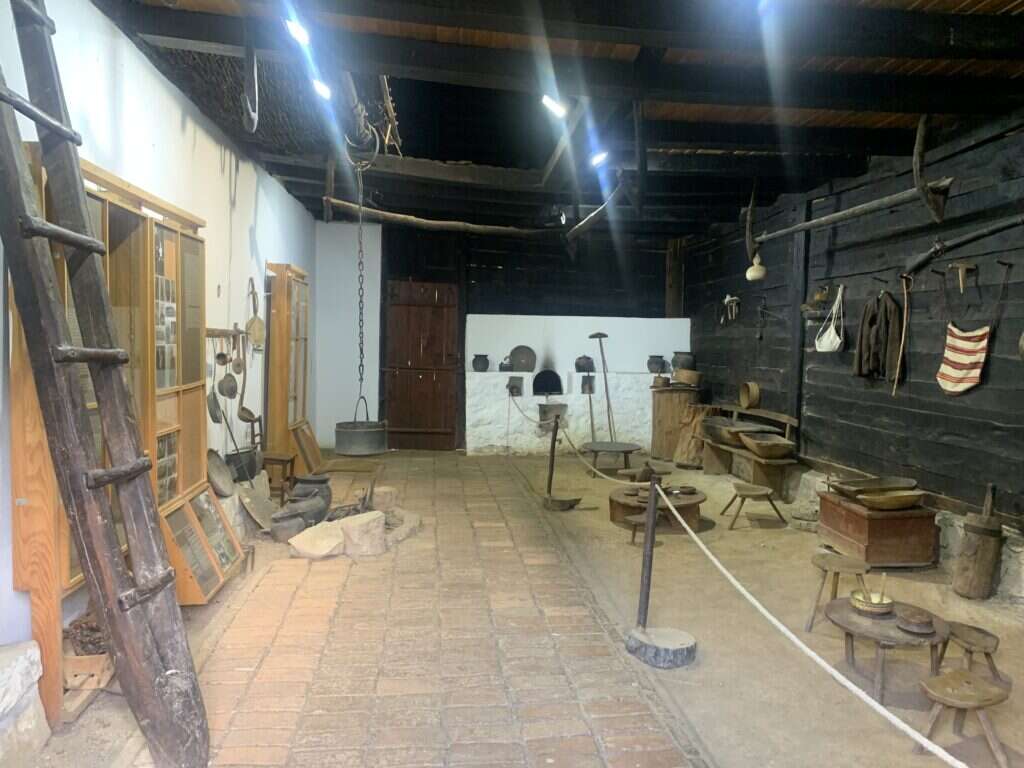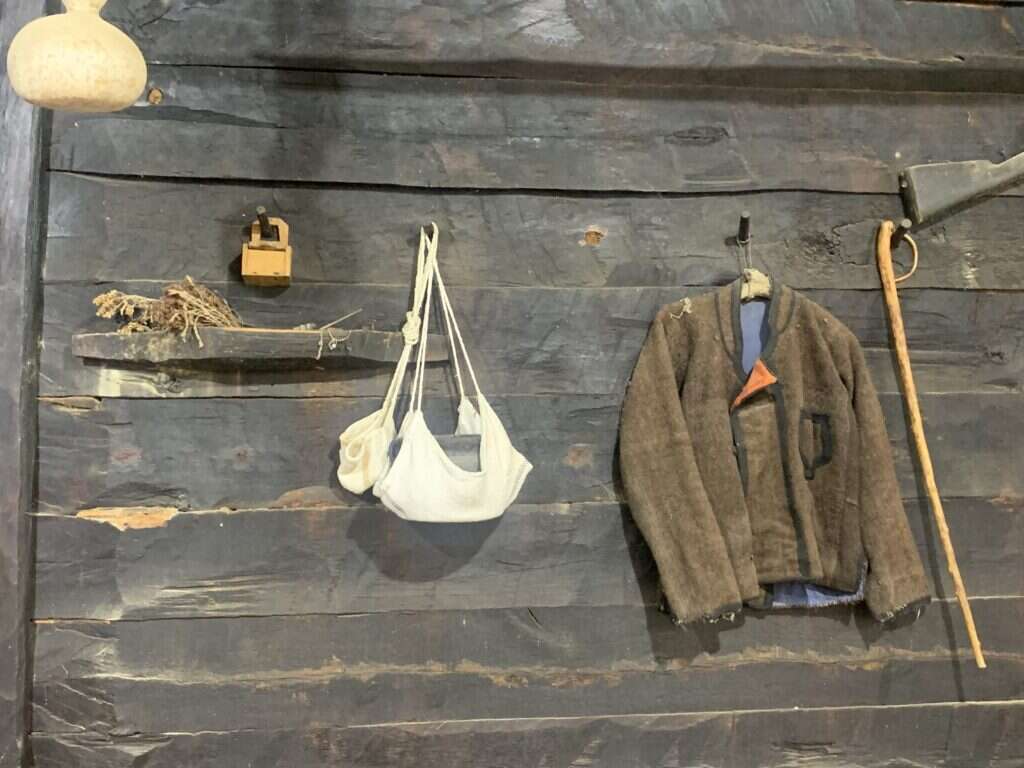In the village of Struganik, not far from Mionica, a beautiful and peaceful town in western Serbia, there is a large, white house, perfectly preserved in the condition it was in in the second half of the 19th century. The kind host welcomes us with open arms, as he does with everyone who comes here to get acquainted with the history located in probably the most beautiful part of Serbia.

The host, Miodrag Mišić, is very proud of what he has to show to the visitors, because his famous ancestor is none other than Duke Živojin Mišić, the hero of Serbia, the most important military commander of the Serbian army in the Great War, the World War One.

In addition to the fact that it is the protected cultural property of Serbia, due to its great historical significance, the house itself is beautiful. It is located on a slope below a large parking lot for visitors, and from the perfectly green grass “sprout” auxiliary wooden buildings, which take us back a century and a half back in time and evoke what life used to be like in this part of Serbia…
And judging by how we feel, it was really beautiful. The endless hills that stretch for tens of kilometers around, all green and mighty, are interrupted only by the blue infinity above them. The house and the houses around it are in perfect harmony with nature, and we can easily imagine the world in which little Živojin, the future hero of his homeland, grew up here in the 60s and 70s of the 19th century.

While we enter the right half of this house, this feeling only gets stronger. It contains all the objects that a Serbian family used in everyday life at that time: there are troughs, tables, chairs, dishes, irons, a mortar and, of course, gusle, a traditional serbian musical instrument… There are also many small things that over time have become unknown to us who live in 21st century.







In the other part of the house, there are objects and documents related to Živojin Mišić’s great military career: from the decorations he earned as one of the leaders of the Serbian army, through detailed maps of the most important battles in which he led Serbs to victories over superior Austro-Hungarians, through newspaper articles about him, to personal documents…

By the way, Duke Mišić was the 13th child in his family, the host tells us. He was born, he says, under a plum tree in a meadow. We go outside, and we see the meadow where he was born. Since his parents Radovan and Andjelija had three children who died before him, they decided to name him Živojin (full of life).
It is worth mentioning that the Mišićs themselves, before moving to Struganik, had the surname Kaljević, and they originated from Montenegro, from the village of Tepci at the foot of Durmitor. Since Mišo Kaljević was the first one to come to this area with his family, all his descendants were called Mišići.

As a child, Živojin enjoyed a carefree childhood, until the age of 10: he was a favorite child in the family, and as a boy he looked after sheep and goats on the beautiful hills of Struganik. When he turned 10, however, the first big change in his life happened: he was sent to study at a school located in the canyon of the river Ribnica, right next to the Ribnica cave, today a protected natural asset that is best known for 15 different species of bats living in it.

Živojin was not very enthusiastic about the change, mostly because of those bats: as the host tells us, the most terrible punishment for disobedient students was when the teacher sent them into the cave to fetch water, that terrible cave inhabited by winged creatures…
Here, the future hero of Serbia finished two grades, and then his brother Lazar Mišić, who was already a soldier, took him to Kragujevac, where he finished two more grades. Živojin, following his brother’s steps, enrolled and finished high school, and then the Military School.

At this time, Živojin was 19 years old, and he took part in the war between Serbia and Turkey (1876). In the military school, he also studied dancing, because one of the abilities of an officer at that time had to be the ability not to be embarrassed at a ball…
This will be the key in the first great life victory of the young Živojin Mišić. In Arandjelovac, in the years that followed the war, a ball was organized for young officers, and all young ladies from the city and those who stayed in then elite nearby resort of Bukovicka Banja regularly came to such balls.

It was customary for the ladies to choose with whom they would dance each of the dances that were planned, so each of them kept a notebook in which she wrote down with whom she would dance (there were 10 dances in total).
Živojin immediately noticed the most beautiful of all the girls, Louise, otherwise the daughter of a rich German merchant. For the first time, he showed the courage and determination that adorned him throughout his career, approached Louise, took away her notebook, and wrote his name next to each dance.
Fortunately for him, she liked what he did, and after 10 dances, a great love was born.

Louise’s father, however, was not thrilled that his daughter could marry a young man from the village, a man of the Orthodox faith, and there was a big problem.
Faced with the first seemingly insurmountable problem, the future duke did what he later told his soldiers: “Life is a long and difficult struggle. He who dares is the one who can do it. He who does not know fear is moving forward. ”
In the end, Živojin and Louise got married, although they never received her parents’ consent. They were a happy and harmonious married couple, and fate gave them three daughters and three sons.

After years and years spent in military service, Mišić proved to be an extraordinary officer and man, which was confirmed in all the wars that Serbia fought in that period.
After two wars with the Turks (1876 and 1877-1878), he participated in the war between Serbia and Bulgaria, in 1885, as one of the commanders of the Drina Division.
He taught strategy at the Military Academy for six years, and was close to the Obrenović dynasty, which after the assassination of Aleksandar Obrenović and the coming to power of the Karađorđević dynasty, almost cost him his career: Mišić was retired, at the age of 48, as a colonel. His place would be taken by officers loyal to the new dynasty.
However, when necessary, as early as 1909, in the midst of a major conflict with Austria-Hungary, known as the Annexation Crisis, Duke Radomir Putnik, commander of the Serbian Army, demanded that Mišić be activated, and appointed him his assistant, to put together a war plan, in case the mighty Austro-Hungaria invaded Serbia.

The Balkan wars followed, in which Mišić was the closest associate of Radomir Putnik, and many historians believe that his influence was crucial for Serbia to emerge victorious from those.
After the Battle of Kumanovo, in which the Serbian army defeated the Turks and marked the end of their influence in the Balkans, Mišić was promoted to the rank of general, and is credited with defeating the Bulgarians in the Battle of Bregalnica, when 200,000 Serbian soldiers clashed with 200,000 Bulgarian soldiers.

Mišić, who was already 58 years old after the Balkan wars, retired for the second time, but was soon reactivated, before the beginning of the First World War, when he was appointed assistant to the Supreme Command.
The battle that inscribed his name in golden letters in the history of Serbia was the Battle of Kolubara, the most significant battle of the Serbian army in World War I, in which at the end of 1914 the First Army of the Serbian Army, led by Mišić, defeated the much bigger and better equipped Austro-Hungarian army.

The whole world heard about Mišić’s name then, because no one could believe that a small country, such as Serbia, had defeated a great force such as Austria-Hungary in a trench battle.
A hero, not only of Serbia, but also of a large part of Europe, Mišić received the highest rank in the Serbian army three days after the battle – he became Duke Živojin Mišić.
Duke Mišić was also the chief of the Thessaloniki offensive, and after the war he was the first chief of staff of the joint state of South Slavs – the Kingdom of Serbs, Croats and Slovenes – later Yugoslavia.

Three years after the war, the duke fell ill, and before he was sent to France for treatment, he told his sons “I also brought a uniform, I can’t go in civilian clothes.” The treatment was unsuccessful, and before his death, on January 20, 1921, the duke gathered the children and told them “I do not leave you any wealth, except for my honorable name, which you will be proud of throughout your life.”
He was survived by six children, and after the Second World War, Louise Mišić renounced her German origin, converted to Orthodoxy and took the baptized name Magdalena.

All these details from the life of Duke Mišić are more than well documented and shown in the exhibition in his birth house. Everyone who comes here and sees with their own eyes this historical treasure will be a direct witness to the history of Serbia and Europe in the second half of the 19th and the first half of the 20th century.
This text is part of the project “Mionica, the beauty you must see”, and was co-financed by the Municipality of Mionica.
(Come to Serbia)
